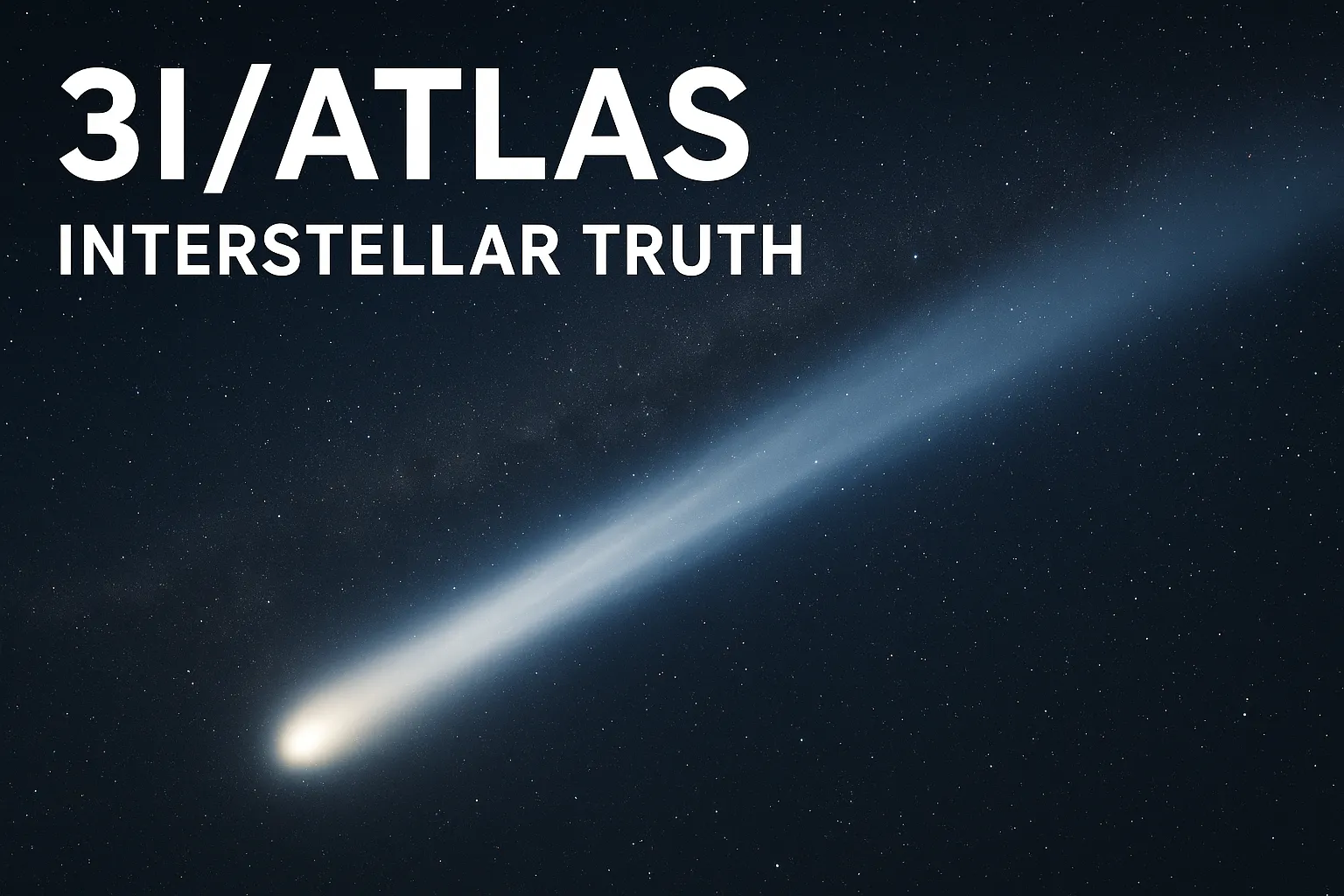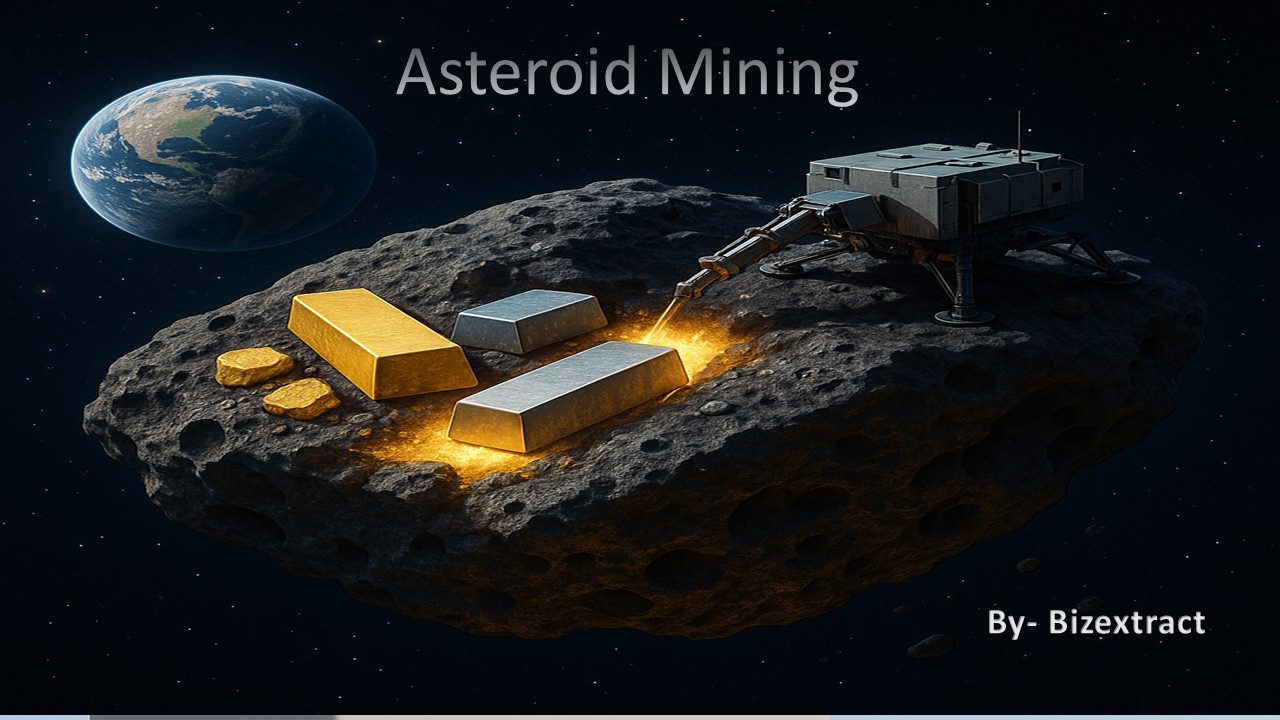
हिंदी में पढ़ने के लिए मेनू बार से हिंदी भाषा चयन करें।
Sometimes, the universe surprises us with visitors from far beyond our solar neighborhood. One such guest — 3I/ATLAS — has recently captured the world’s attention. It’s not just another comet but a rare interstellar object, meaning it didn’t form in our Solar System. Instead, it originated around another star and wandered across interstellar space before entering ours.
Only two such interstellar visitors have ever been discovered before — 1I/ʻOumuamua (2017) and 2I/Borisov (2019). The discovery of 3I/ATLAS marks the third known interstellar object, making it a once-in-a-lifetime event for astronomers and space enthusiasts alike.
Think of it as a cosmic traveler — a mysterious outsider passing through our celestial neighborhood, giving scientists a golden chance to study something made in another star system.
Discovery and Basic Facts
- Discovered on: July 1, 2025
- Discovered by: The Asteroid Terrestrial-impact Last Alert System (ATLAS) survey in Chile
- Designation meaning: “3I” means the third interstellar object (“I” for interstellar).
- Path type: Hyperbolic — meaning it’s not bound by the Sun’s gravity; it came from outside the Solar System and will exit again.
- Closest approach to the Sun: Around 1.4 AU (1 AU = distance between Earth and the Sun).
- Speed: Around 130,000 mph (~209,000 km/h).
- Threat to Earth: None — scientists have confirmed it will safely pass by.
NASA, ESA, and other space agencies have been observing 3I/ATLAS closely, confirming that it poses no danger to our planet.
What Makes It Special
1. An Interstellar Visitor
3I/ATLAS is moving at a speed that makes it impossible for it to be native to our Solar System. It’s too fast and its trajectory is open-ended. That alone proves it’s an interstellar traveler — likely ejected from another star system billions of years ago.
2. Its Composition
Unlike ordinary comets, 3I/ATLAS displays unusual activity:
- It has a visible coma (gas and dust cloud) and sometimes even an odd-looking tail.
- Observations from the Gemini South Telescope and Hubble Space Telescope revealed emissions of hydroxyl (OH), a sign of water ice sublimating as it nears the Sun.
- Some studies suggest it contains a higher amount of carbon dioxide (CO₂) than typical comets.
- It also brightened suddenly and unpredictably, which puzzled astronomers.
This strange brightening suggests that 3I/ATLAS’s icy surface may have fractured or released gas jets unexpectedly — a behavior that’s different from the gradual activity of normal comets.
Why Scientists Are Excited
3I/ATLAS gives scientists a rare opportunity to study materials from another star system. Every comet carries information about its birthplace — like a time capsule containing clues about how planets, stars, and possibly even life, formed elsewhere in the galaxy.
With telescopes like James Webb Space Telescope (JWST), Hubble, and NOIRLab’s Gemini South, researchers are analyzing its composition, structure, and trajectory. The more they learn about it, the better they can compare it with comets from our own Solar System.
In simple terms, it’s like comparing ingredients from two different kitchens to understand how recipes (solar systems) vary across the universe.
The Journey Through the Solar System
As 3I/ATLAS entered our Solar System, it passed near Mars and became visible to major observatories on Earth. Its brightness fluctuated dramatically — at times becoming more visible than expected — before dimming again as it continued its journey back toward interstellar space.
Scientists have mapped its hyperbolic orbit, confirming that it came from the direction of the constellation Lyra and will exit toward Centaurus.
Unlike typical comets that orbit the Sun, this one will never return. Once it leaves, it’s gone forever — making current observations extremely valuable.
Challenges in Studying It
Despite the excitement, 3I/ATLAS poses several scientific challenges:
- Limited observation window: Because of its high speed, astronomers have only a few months to gather data before it disappears from view.
- Uncertain origin: Pinpointing exactly which star system it came from is nearly impossible. It could have been ejected by a distant binary star billions of years ago.
- Unexpected behavior: The rapid brightening and unusual chemical emissions don’t fit perfectly into our existing comet models. Scientists are still trying to explain these anomalies.
Common Misconceptions and Rumors
Whenever a mysterious object appears in space, social media fills up with wild theories — and 3I/ATLAS is no exception. Some online posts even claimed it might be an “alien spacecraft” or an “artificial probe.”
However, all credible scientific evidence so far supports the idea that 3I/ATLAS is a natural comet, not an artificial object.
Its water-ice composition, dust emissions, and tail behavior match natural cometary physics.
NASA and other research groups have clearly stated that there is no indication of any technology or intelligent origin.
Why It Matters
3I/ATLAS is not just a spectacle — it’s a scientific milestone. Here’s why:
- It allows astronomers to study materials formed around other stars.
- It helps test our theories of planet formation and comet chemistry.
- It gives us insight into how often interstellar objects pass through our Solar System.
- Future observatories, such as the Vera C. Rubin Observatory (LSST), are expected to detect many more interstellar visitors in coming decades.
This could eventually help us estimate how much “interstellar traffic” the Milky Way has — and whether our Solar System is a common destination for cosmic travelers.
What We’ve Learned So Far
From all the telescopic observations and analysis, here’s what scientists have found:
- It’s rich in ice and dust, similar to comets in our system but with some unusual chemical differences.
- It behaves erratically, suggesting surface instability or unique composition.
- It’s moving too fast to be captured by the Sun — confirming its interstellar origin.
- It’s not dangerous — Earth remains completely safe.
Every piece of data adds to our understanding of what’s beyond our Solar System. It’s a reminder that the universe is full of wandering fragments — messengers from other worlds.
The Future of Interstellar Studies
3I/ATLAS might inspire the next generation of missions designed specifically to chase interstellar visitors. Projects like Comet Interceptor (ESA) and NASA’s Interstellar Probe concept aim to be ready to launch when the next visitor appears.
If such missions succeed, humanity might one day study an interstellar comet up close, analyzing its surface and materials directly. That would open a brand-new chapter in space exploration.
Outcome
3I/ATLAS is more than just a comet — it’s a cosmic storyteller carrying secrets from another star system. Its unexpected arrival, rapid speed, and mysterious nature remind us how vast and connected our universe truly is.
While rumors and sensational claims fill the internet, real science tells a more fascinating story — one of curiosity, discovery, and cosmic diversity.
In the end, 3I/ATLAS is a symbol of how small our Solar System is compared to the galaxy — and how much there still is to explore.
So next time you look up at the night sky, remember — somewhere out there, another traveler like 3I/ATLAS might already be on its way toward us, ready to share more secrets of the stars.
Sources: NASA Science – “Comet 3I/ATLAS Overview”, ESA and NOIRLab Observations Reports, Universe Today – “Where Did 3I/ATLAS Come From?”, Space.com and Scientific American – “The Interstellar Race to Study 3I/ATLAS”, LiveScience – JWST and Hubble data updates

































































